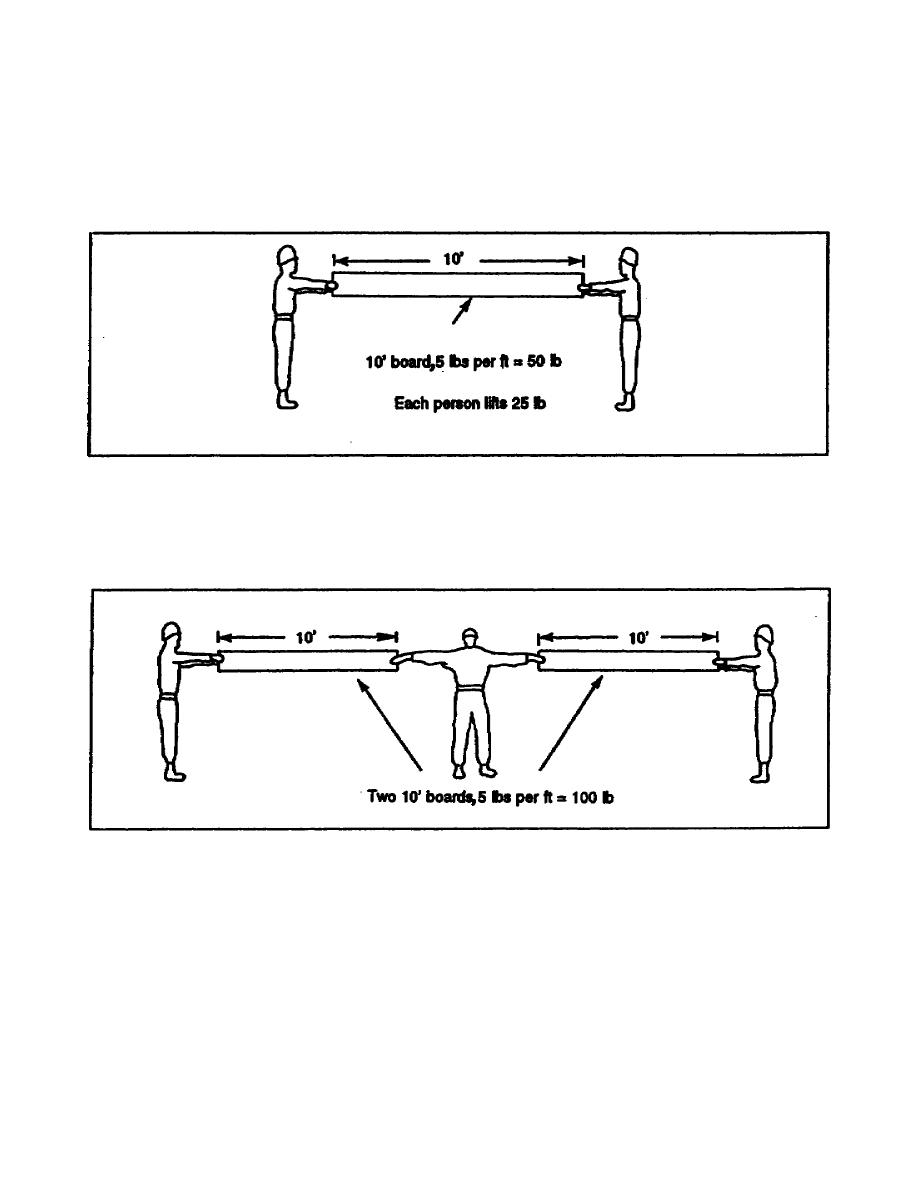
1-5. Load Area. Both the foundation walls and the girder carry the load area of a building. Because
the ends of each joist rest on the girder, there is more weight on the girder than on either of the wall.
Example 1. Before considering the load on the girder, consider the weight of a single joist. Suppose that
a 10-ft board weighing 5 pounds per foot is led by two men. If the men are at opposite ends of the
plank, they would each be supporting 25 pounds (see Figure 10).
Figure 1-10. Example of weight on a single joist
Example 2. Now assume that one of these men lifts the end of another 10-ft board with the same
weight as the first one, and a third man lifts the opposite end. The two men on the outside are each
supporting half the weight of one plank, or 25 pounds apiece, but the man in the center is supporting
one half of each of the two boards, or a total of 50 pounds (see Figure 1-11).
Figure 1-11. Example of weight on a girder
The two men on the outside represent the foundation walls. The center man represents the girder. The
girder carries half of the weigh and the other half is equally divided between the outside walls. However
the girder may not always be located halfway between the outer walls.
Example 3. Imagine the same three men lifting two planks that weigh 5 pounds per foot. One of the
planks is 8 feet long and the other is 12 feet long. The total length of these two planks is the same as
before. The weight per foot is the same, so the total weight in both cases is 100 pounds.
1-7
EN5156



 Previous Page
Previous Page
